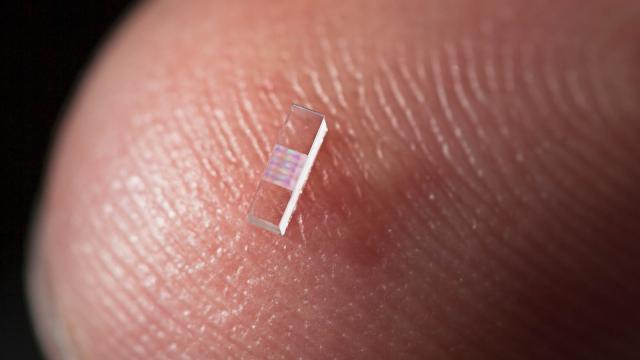Just getting a particle up to near the speed of light isn’t good enough for today’s physics. To properly unravel the fundamentals of the universe, particles have to be smashed together with enormous force. And two Stanford researchers have just devised a laser-based method that imparts 10 times the power of traditional methods at a fraction of the cost.
Particle acceleration involves two steps. First the particle, an electron, is accelerated (go figure!) to near the speed of light — that’s the easy part. But in order to get bigger and better collisions, researchers have to pump up the individual particle’s energy levels using a microwave array. This is both expensive and cumbersome to operate, and the technical roadblock is severely hampering development of next generation “tabletop” accelerators.
The accelerator that Stanford graduate researchers Edgar Peralta and Ken Soong designed instead relies on ultra-fast bursts of laser light. Peralta designed the patterned silica accelerator-on-a-chip while Soong created the precision laser optics for the experiment. Their results were published Friday in Nature.
After the electron beam has been accelerated to near the speed of light in a conventional accelerator, it’s focused onto a half-micron-wide channel in the silica chip. Along this channel a series of nanoscale ridges have been etched into the glass that generate precise electric fields that continually boost the power of electrons as they travel through it. Electrons exiting the chip are imbued with 10 times the energy as those entering it.
“We still have a number of challenges before this technology becomes practical for real-world use, but eventually it would substantially reduce the size and cost of future high-energy particle colliders for exploring the world of fundamental particles and forces,” said Joel England, the SLAC physicist who led the experiments, said in a press statement. “It could also help enable compact accelerators and X-ray devices for security scanning, medical therapy and imaging, and research in biology and materials science.” And don’t forget the fledgling field of ghostbusting as well. [SLAC]
